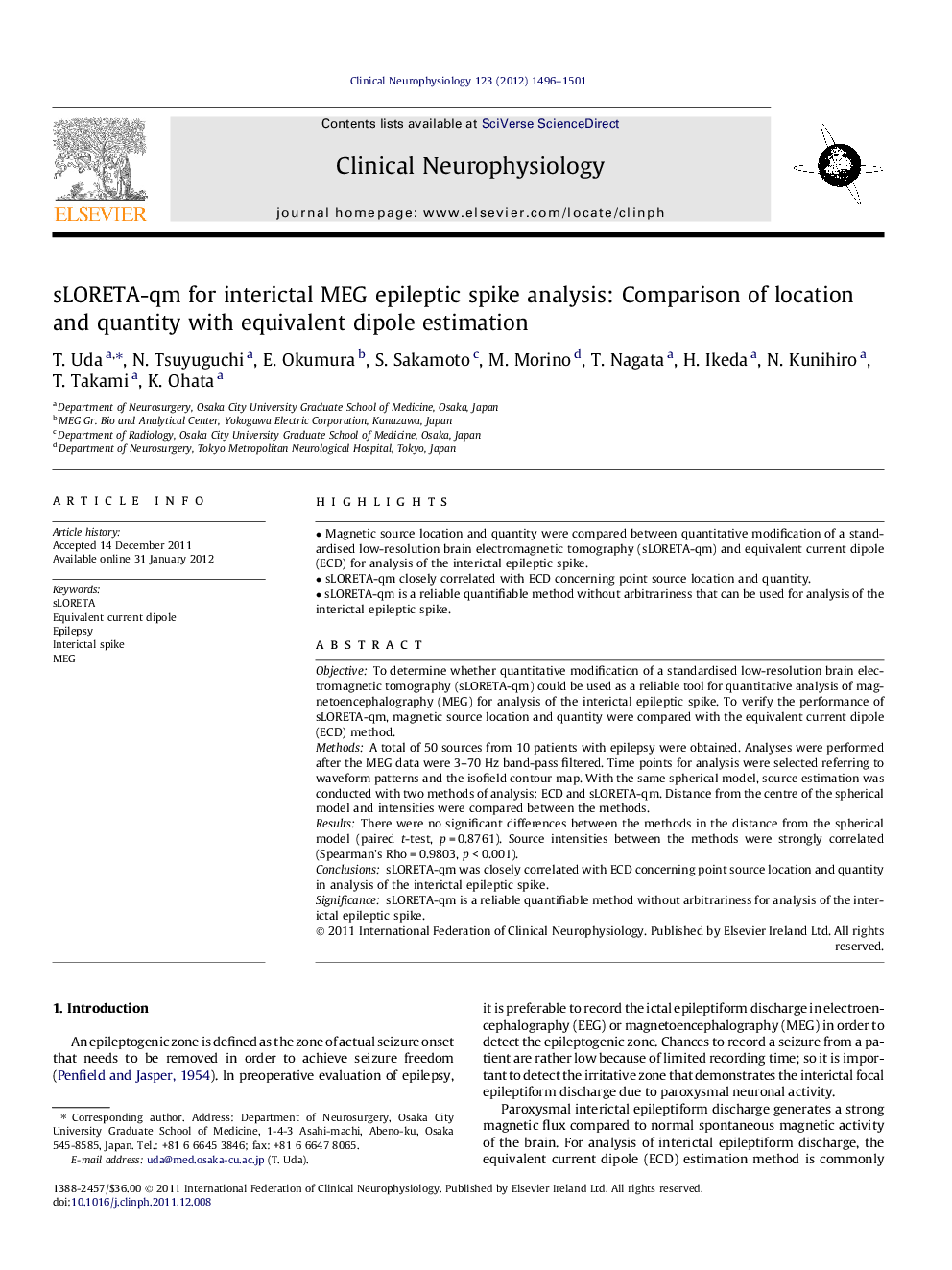| Article ID | Journal | Published Year | Pages | File Type |
|---|---|---|---|---|
| 3043415 | Clinical Neurophysiology | 2012 | 6 Pages |
ObjectiveTo determine whether quantitative modification of a standardised low-resolution brain electromagnetic tomography (sLORETA-qm) could be used as a reliable tool for quantitative analysis of magnetoencephalography (MEG) for analysis of the interictal epileptic spike. To verify the performance of sLORETA-qm, magnetic source location and quantity were compared with the equivalent current dipole (ECD) method.MethodsA total of 50 sources from 10 patients with epilepsy were obtained. Analyses were performed after the MEG data were 3–70 Hz band-pass filtered. Time points for analysis were selected referring to waveform patterns and the isofield contour map. With the same spherical model, source estimation was conducted with two methods of analysis: ECD and sLORETA-qm. Distance from the centre of the spherical model and intensities were compared between the methods.ResultsThere were no significant differences between the methods in the distance from the spherical model (paired t-test, p = 0.8761). Source intensities between the methods were strongly correlated (Spearman’s Rho = 0.9803, p < 0.001).ConclusionssLORETA-qm was closely correlated with ECD concerning point source location and quantity in analysis of the interictal epileptic spike.SignificancesLORETA-qm is a reliable quantifiable method without arbitrariness for analysis of the interictal epileptic spike.
